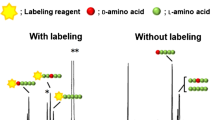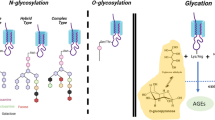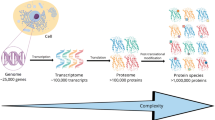Abstract
Protein phosphorylation is a critical mechanism in the regulation of cellular biochemical pathways and phosphopeptides can play an important role in determining function. However, the use of phosphopeptides especially multiphosphorylated peptides is hampered by their low abundance, difficulty in isolation from biological samples and in their chemical synthesis. Here we describe methodologies for the Fmoc synthesis, purification and mass spectral analysis of the multiphosphorylated sequence H-[Asp-(Ser(P))2]3-Asp-OH from phosphophoryn a protein involved in dentine mineralization. Critical steps in the synthesis of phosphophoryn using Fmoc-Ser(PO3Bzl,H)-OH as the building block were double acylation steps for each residue, alternating HBTU and HATU as the acylating agents and synthesis on a chlorotrityl resin which was essential for complete removal of the benzyl-side chain protecting groups. The synthetic phosphophoryn was only effectively purified by anion exchange and size exclusion chromatography as both alkaline and acid buffers failed to aid in purification by reversed phase HPLC. MALDI-TOF analysis of phosphophoryn was achieved with good sensitivity (20 fmol/ml) and resolution using the DNA matrix 3-hydroxypicolinic acid, whereas typical protein/peptide matrices failed to provide mass spectra. The synthetic phosphophoryn peptide was found to bind calcium, binding 6 mol of calcium per mole of peptide. In conclusion the methodology described here can be easily adopted for the synthesis and analysis of a wide variety of multiphosphorylated peptides.




Similar content being viewed by others
References
Beck A, Deeg M, Moeschel K, Schmidt EK, Schleicher ED, Voelter W, Haring HU, Lehmann R (2001) Alkaline liquid chromatography/electrospray ionization skimmer collision-induced dissociation mass spectrometry for phosphopeptide screening. Rapid Commun Mass Spectrom 15:2324–2333
Carpino LA (1993) 1-Hydroxy-7-azabenzotriazole. An efficient peptide coupling additive. J Am Chem Soc 115:4397–4398
Cross KJ, Huq NL, Palamara JE, Perich JW, Reynolds EC (2005a) Physicochemical characterization of casein phosphopeptide-amorphous calcium phosphate nanocomplexes. J Biol Chem 280:15362–15369
Cross KJ, Huq NL, Reynolds EC (2005b) Protein dynamics of bovine dentin phosphophoryn. J Pept Res 66:59–67
De Bont HBA, Van Boom JH, Liskamp RMJ (1990) Automatic synthesis of phosphopeptides by phosphorylation on the solid phase. Tetrahedron Lett 31:2497–2500
Dunican DJ, Doherty P (2001) Designing cell-permeant phosphopeptides to modulate intracellular signaling pathways. Biopolymers 60:45–60
Fischer PM, Retson KV, Tyler MI, Howden ME (1992) Application of arylsulphonyl side-chain protected arginines in solid-phase peptide synthesis based on 9-fluorenylmethoxycarbonyl amino protecting strategy. Int J Pept Protein Res 40:19–24
Hunter T (2000) Signaling–2000 and beyond. Cell 100:113–127
Huq NL, Cross KJ, Talbo GH, Riley PF, Loganathan A, Crossley MA, Perich JW, Reynolds EC (2000) N-terminal sequence analysis of bovine dentin phosphophoryn after conversion of phosphoseryl to S-propylcysteinyl residues. J Dent Res 79:1914–1919
Huq NL, Cross KJ, Ung M, Reynolds EC (2005) A review of protein structure and gene organisation for proteins associated with mineralised tissue and calcium phosphate stabilisation encoded on human chromosome 4. Arch Oral Biol 50:599–609
Johansson A, Akerblom E, Ersmark K, Lindeberg G, Hallberg A (2000) An improved procedure for N- to C-directed (Inverse) solid-phase peptide synthesis. J Comb Chem 2:496–507
Johnson LN, Lewis RJ (2001) Structural basis for control by phosphorylation. Chem Rev 101:2209–2242
Jonsson M, Fredriksson A (1978) Isoelectric focusing of the phosphoprotein of rat-incisor dentin in Ampholine and acid pH gradients. Evidence for carrier Ampholyte-protein complexes. J Chromatogr 157:235–242
Kong Y, Zhu Y, Zhang JY (2001) Ionization mechanism of oligonucleotides in matrix-assisted laser desorption/ionization time-of-flight mass spectrometry. Rapid Commun Mass Spectrom 15:57–64
Kratzer R, Eckerskorn C, Karas M, Lottspeich F (1998) Suppression effects in enzymatic peptide ladder sequencing using ultraviolet—matrix assisted laser desorption/ionisation—mass spectormetry. Electrophoresis 19:1910–1919
Liao PC, Leykam J, Andrews PC, Gage DA, Allison J (1994) An approach to locate phosphorylation sites in a phosphoprotein: mass mapping by combining specific enzymatic degradation with matrix-assisted laser desorption/ionization mass spectrometry. Anal Biochem 219:9–20
Malkoski M, Dashper SG, O’Brien-Simpson NM, Talbo GH, Macris M, Cross KJ, Reynolds EC (2001) Kappacin, a novel antibacterial peptide from bovine milk. Antimicrob Agents Chemother 45:2309–2315
Mann M, Ong SE, Gronborg M, Steen H, Jensen ON, Pandey A (2002) Analysis of protein phosphorylation using mass spectrometry: deciphering the phosphoproteome. Trends Biotechnol 20:261–268
Marsh ME (1989) Binding of calcium and phosphate ions to dentin phosphophoryn. Biochemistry 28:346–352
McMurray JS, Coleman DRT, Wang W, Campbell ML (2001) The synthesis of phosphopeptides. Biopolymers 60:3–31
Miranda LP, Alewood PF (1999) Accelerated chemical synthesis of peptides and small proteins. Proc Natl Acad Sci U S A 96:1181–1186
Moyer SC, Cotter RJ, Woods AS (2002) Fragmentation of phosphopeptides by atmospheric pressure MALDI and ESI/Ion trap mass spectrometry. J Am Soc Mass Spectrom 13:274–283
Perich JW, Reynolds EC (1991) Fmoc/solid-phase synthesis of Tyr(P)-containing peptides through t-butyl phosphate protection. Int J Pept Protein Res 37:572–575
Perich JW, Ede NJ, Eagle S, Bray AM (1999) Synthesis of phosphopeptides by the Multipinast method: evaluation of coupling methods for the incorporation of Fmoc- Tyr(PO3Bzl, H)-OH, Fmoc- Ser(PO3Bzl, H)-OH and Fmoc- Thr(PO3Bzl, H)-OH. Lett Peptide Sci 6:91–97
Sakamoto KM, Kim KB, Verma R, Ransick A, Stein B, Crews CM, Deshaies RJ (2003) Development of Protacs to target cancer-promoting proteins for ubiquitination and degradation. Mol Cell Proteomics 2:1350–1358
Shahgholi M, Garcia BA, Chiu NH, Heaney PJ, Tang K (2001) Sugar additives for MALDI matrices improve signal allowing the smallest nucleotide change (A:T) in a DNA sequence to be resolved. Nucleic Acids Res 29:E91
Shen P, Cai F, Nowicki A, Vincent J, Reynolds EC (2001) Remineralization of enamel subsurface lesions by sugar-free chewing gum containing casein phosphopeptide-amorphous calcium phosphate. J Dent Res 80:2066–2070
Tholey A, Toll H, Huber CG (2005) Separation and detection of phosphorylated and nonphosphorylated peptides in liquid chromatography-mass spectrometry using monolithic columns and acidic or alkaline mobile phases. Anal Chem 77:4618–4625
Vetter SW, Leclerc E (2003) Novel aspects of calmodulin target recognition and activation. Eur J Biochem 270:404–414
Wakamiya T, Saruta K, Yasuoka J, Kusumoto S (1994) An efficient procedure for solid-phase synthesis of phosphopeptides by the Fmoc strategy. Chem Lett 6:1099–1102
Wu KJ, Steding A, Becker CH (1993) Matrix-assisted time-of-flight mass spectrometry of oligonucleotides using 3-hydroxypicolinic acid as an ultraviolet-sensitive matrix. Rapid Commun Mass Spectrom 7:142–146
Acknowledgements
The Australian National Health and Medical Research Council (Project No. 251707) supported this work. Neil M. O’Brien-Simpson is a CR Roper fellow.
Author information
Authors and Affiliations
Corresponding author
Rights and permissions
About this article
Cite this article
O’Brien-Simpson, N.M., Attard, T.J., Loganathan, A. et al. Synthesis and Characterisation of a Multiphosphorylated Phosphophoryn Repeat Motif; H-[Asp-(Ser(P))2]3-Asp-OH. Int J Pept Res Ther 13, 469–478 (2007). https://doi.org/10.1007/s10989-007-9106-z
Received:
Accepted:
Published:
Issue Date:
DOI: https://doi.org/10.1007/s10989-007-9106-z




